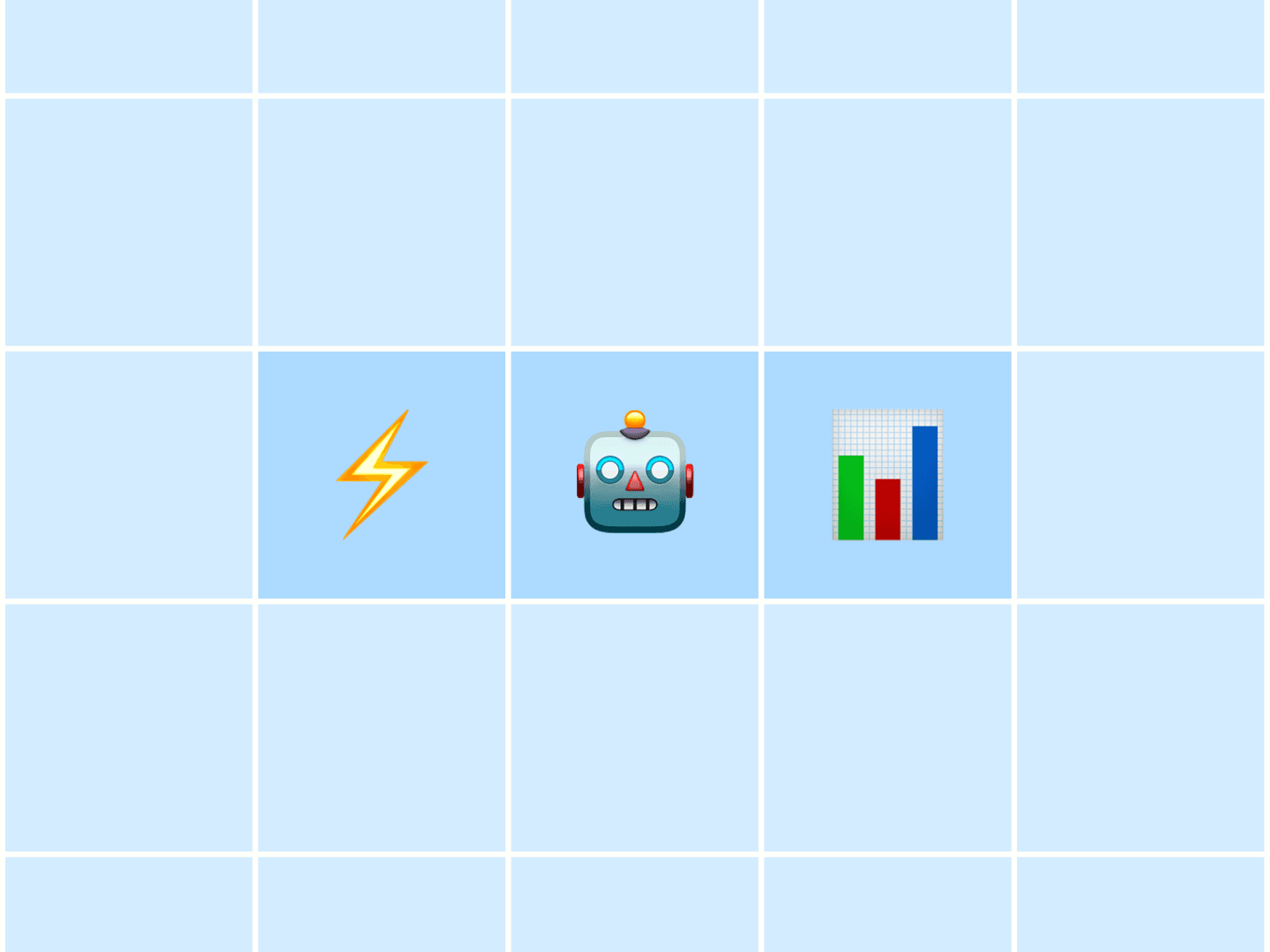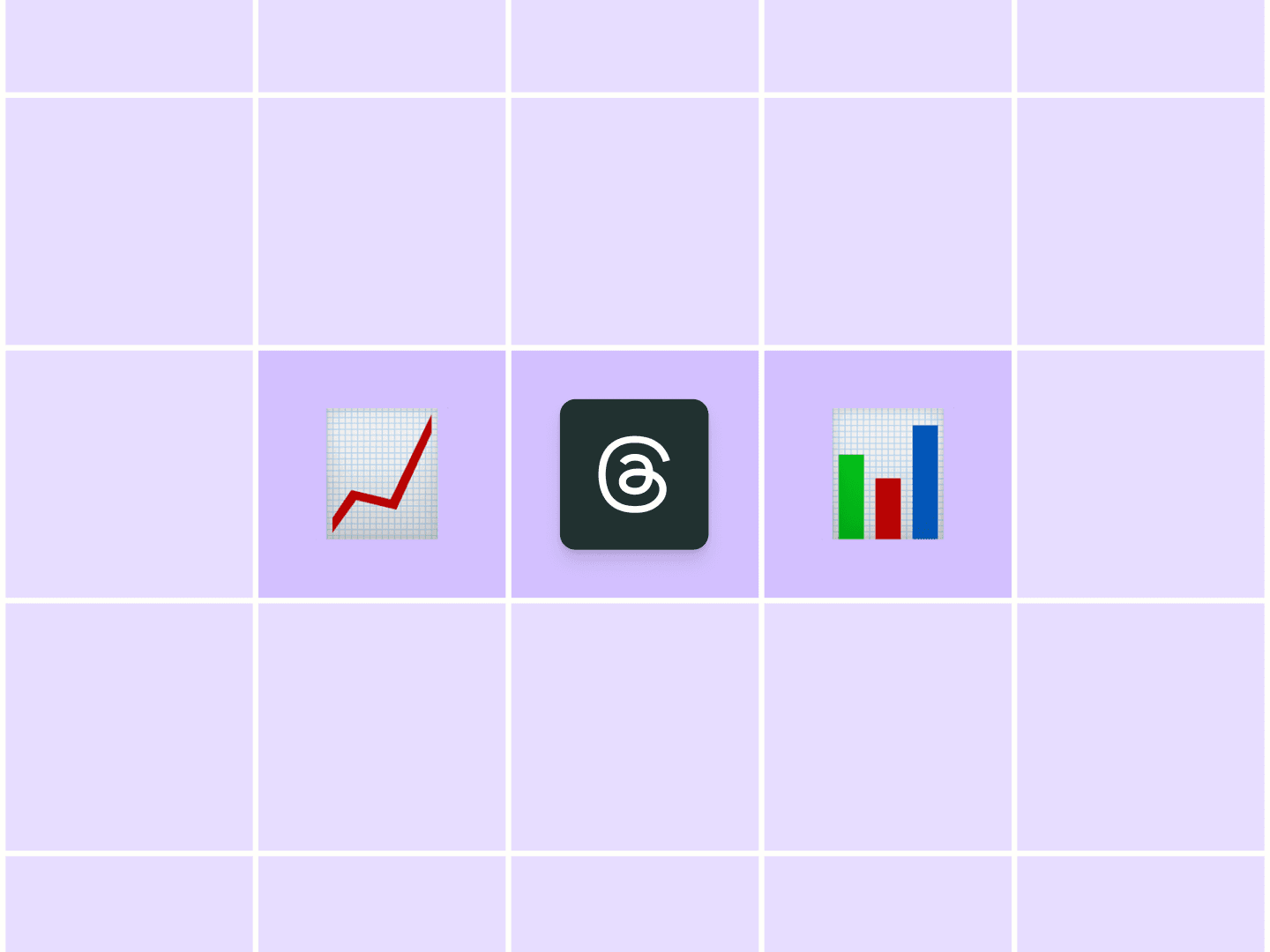Buffer blog
Latest

- Topic
- Published
The ins and outs of Instagram Stories, from getting started to advanced strategies that will make your stories stand out on Instagram.
Reading time17 minute read

- Topic
- Data
- Published
According to our analysis of millions of social posts, these are the most widely-used emojis on all major platforms in 2025.
Reading time6 minute read

- Published
This article will share ten social media marketing tasks you can automate to free up some headspace and clear up that to-do list.
Reading time12 minute read
Featured

- Topic
- TikTok
- Published
A deep dive into the TikTok algorithm, how it works, and how you can work with it to enhance your visibility and engagement on the platform.
Reading time13 minute read

- Topic
- TikTok
- Published
TikTok hashtags can help you boost visibility and reach a broader audience. Learn how to use them with 250 curated examples.
Reading time14 minute read

- Topic
- Tools
- Published
Save time, automate processes, get in-depth analytics, and more with these best-in-class social media tools for 2026.
Reading time22 minute read
Marketing

- Topic
- Open
- Published
In this article, Kateryna shares the results from testing four AI-powered speech-to-text tools in her daily workflow.
Reading time6 minute read

- Topic
- Creator
- Published
Here's how I set up a content loop of ideas using AI – and how you can do it too.
Reading time6 minute read

- Topic
- Productivity
- Published
As a self-proclaimed tools nerd, I’m testing the ever-growing list of AI productivity tools on the market. These are the ones I keep coming back to.
Reading time10 minute read

- Topic
- TikTok
- Published
In this guide, we’ll go through everything you need to know about TikTok analytics — how to access and read your TikTok analytics, what numbers you should track, and how to use this information to post smarter.
Reading time11 minute read

- Topic
- Published
See how your LinkedIn posts perform with personal profile analytics. Track impressions, engagement, video views, and more right inside your Sent Posts tab. It’s never been easier to learn what’s working and keep growing.
Reading time3 minute read

- Published
Social media platforms and analytics tools give you lots of metrics to track. But how do you know which ones are right for you — and how to make them work for your social media strategy?
Reading time19 minute read

- Topic
- Published
Whether you’re looking to level up your company’s LinkedIn marketing or use LinkedIn to build a personal brand, we’ve got you covered with these LinkedIn best practices.
Reading time44 minute read

- Topic
- Published
LinkedIn document carousels are among the best ways to capture your audience's attention. Follow this guide to create scroll-stopping carousels.
Reading time8 minute read
- Topic
- Content Marketing
- Published
A beginner's guide to understanding UTM tracking links — and how to create your own with free-to-use tools.
Reading time10 minute read

- Topic
- Published
The ins and outs of Instagram Stories, from getting started to advanced strategies that will make your stories stand out on Instagram.
Reading time17 minute read

- Topic
- Data
- Published
According to our analysis of millions of social posts, these are the most widely-used emojis on all major platforms in 2025.
Reading time6 minute read

- Published
This article will share ten social media marketing tasks you can automate to free up some headspace and clear up that to-do list.
Reading time12 minute read

- Topic
- Data
- Published
According to our analysis of millions of social posts, these are the most widely-used emojis on all major platforms in 2025.
Reading time6 minute read

- Topic
- Creator
- Published
In this article, we detail two things that will help you grow as a creator in 2026: consistency and engagement.
Reading time8 minute read

- Topic
- Published
Replying to LinkedIn comments can boost engagement by 30%, according to our analysis of 72,000 posts. Learn why this works and how to make comment engagement sustainable.
Reading time4 minute read

- Topic
- Tools
- Published
Discover 29 essential digital marketing tools that help growing brands succeed without breaking the bank — including free and affordable options.
Reading time26 minute read

- Topic
- Email Marketing
- Published
Learn how a focus on personalized retention marketing helps Devanshi Garg Sareen manage high acquisition costs and succeed in a crowded market.
Reading time6 minute read

- Topic
- Flow
- Published
Eric Lam felt a pull for creativity and left his full-time job at a VC firm to grow a newsletter business. Four months in, he'd grown ExplodingIdeas.co into a profitable newsletter business. Learn the strategies behind the newsletter's success and get insights for your own entrepreneurial journey.
Reading time8 minute read
- Topic
- Flow
- Published

- Topic
- Influencer Marketing
- Published
Learn the basics of influencer marketing and how to create a winning strategy with this step-by-step guide for beginners (including tips from the experts).
Reading time19 minute read

- Topic
- Influencer Marketing
- Published
In this article, we’ll cut through the noise to help you find the best influencer marketing tool for your specific needs.
Reading time6 minute read

- Topic
- YouTube
- Published
Everything you need to know about YouTube Studio, including how to edit a video or Short and analyze its performance — essential for growing a healthy YouTube subscriber base.
Reading time10 minute read

- Topic
- Published
The ins and outs of Instagram Stories, from getting started to advanced strategies that will make your stories stand out on Instagram.
Reading time17 minute read

- Topic
- Data
- Published
According to our analysis of millions of social posts, these are the most widely-used emojis on all major platforms in 2025.
Reading time6 minute read

- Published
This article will share ten social media marketing tasks you can automate to free up some headspace and clear up that to-do list.
Reading time12 minute read

- Published
This article will share ten social media marketing tasks you can automate to free up some headspace and clear up that to-do list.
Reading time12 minute read

- Topic
- Tools
- Published
Save time, automate processes, get in-depth analytics, and more with these best-in-class social media tools for 2026.
Reading time22 minute read

- Published
In this article, we explore the 8 best free hashtag generators to help your posts get discovered.
Reading time9 minute read

- Topic
- TikTok
- Published
Everything you need to know before your first TikTok LIVE, including a step-by-step guide and best practices, along with some ideas to inspire you.
Reading time11 minute read

- Topic
- AI
- Published
Take your content from simple to studio quality: Here’s a look at some of the best AI video editors available, who they’re best for, and how much they cost.
Reading time15 minute read

- Topic
- Published
How to find Instagram Reel trends while they're still hot enough to make an impact, along with some of the best we’ve seen on the platform this year.
Reading time13 minute read
More

- Topic
- Open
- Published
Every year since 2016 we've closed Buffer for a week at the end of the year. It’s like a reset, except across the whole company.
Reading time5 minute read

- Topic
- Open
- Published
Reading time16 minute read

- Topic
- Open
- Published
In this article, Daniel, a Senior Product Designer, breaks down the development and release of Buffer's new mobile design system, Popcorn to Go.
Reading time6 minute read

- Topic
- Buffer News
- Published
With Buffer's Community, you can see and reply to comments from Instagram, Facebook, Threads, Bluesky, X, and LinkedIn — all in one workspace. For free.
Reading time7 minute read

- Topic
- Buffer News
- Published
Reduce eye strain, protect your focus, and create content comfortably any time of day, whether you're scheduling posts at midnight or engaging with your community at dawn.
Reading time3 minute read

- Topic
- Buffer News
- Published
From faster bug resolutions to smoother workflows, these quiet improvements made Buffer more reliable and consistent for creators in 2025.
Reading time3 minute read

- Topic
- Creator
- Published
Here's how I used Buffer to triple my LinkedIn impressions and grow my newsletter.
Reading time6 minute read

- Topic
- Open
- Published
In this article, Kateryna shares the results from testing four AI-powered speech-to-text tools in her daily workflow.
Reading time6 minute read

- Topic
- Productivity
- Published
As a self-proclaimed tools nerd, I’m testing the ever-growing list of AI productivity tools on the market. These are the ones I keep coming back to.
Reading time10 minute read

- Topic
- Productivity
- Published
As a self-proclaimed tools nerd, I’m testing the ever-growing list of AI productivity tools on the market. These are the ones I keep coming back to.
Reading time10 minute read

- Topic
- Self-Improvement
- Published
Looking for some low-lift ways to make yourself happier? Here's some of the best research that we've found on personal happiness.
Reading time17 minute read

- Topic
- Productivity
- Published
I've tried 57 productivity tools in the past year. These are the ones I keep coming back to.
Reading time12 minute read

- Topic
- Published
Whether you’re looking to level up your company’s LinkedIn marketing or use LinkedIn to build a personal brand, we’ve got you covered with these LinkedIn best practices.
Reading time44 minute read

- Topic
- Published
Reposting just got easier. Whether you’re using Instagram’s new repost button or the classic workarounds, here’s how to share content the right way — with tips to grow your reach and celebrate your community.
Reading time14 minute read

- Topic
- Content Marketing
- Published
Check out our list of the best free SEO tools that can boost your organic rankings on Google and Bing and can lead to immediate gains in your marketing today.
Reading time12 minute read

- Topic
- Published
Stop chasing the tail-end of Instagram audio trends — here are the latest trending songs on Instagram in December 2025.
Reading time6 minute read

- Topic
- Published
To get the attention of the massive audience for Instagram Stories, you’ll need to get creative. Here are some genius story ideas (with examples!) that you can apply to your next story.
Reading time6 minute read

- Topic
- AI
- Published
Learn how to generate AI images and schedule them across social platforms using Buffer and Apple's Image Playground. Discover tips for creative AI image generation and when to use AI-generated visuals strategically.
Reading time2 minute read
Try Buffer for free
190,000+ people like you use Buffer to build their brand on social media every month






















